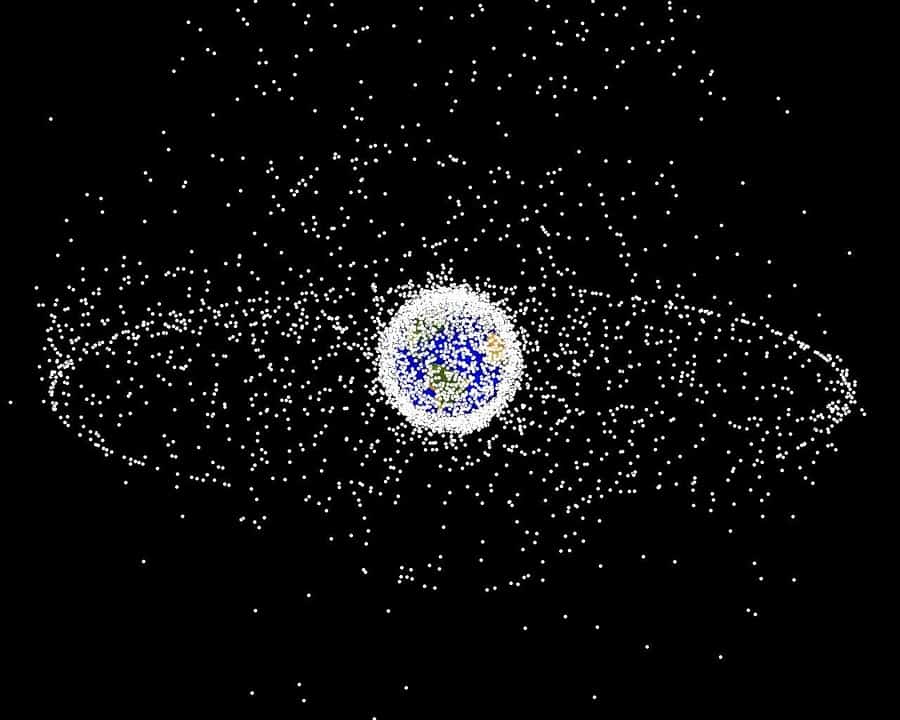There is debris in space. A lot of it. Continuing humans’ habit of leaving trails of trash wherever we seem to go, space is the next frontier of our junk. According to NASA, as of 2021, there were more than 27,000 pieces of space junk floating around the Earth. Two years later, there is obviously more than that.
Orbital debris is any human-made object in orbit around the Earth that no longer serves a useful function. Such debris includes nonfunctional spacecraft, abandoned launch vehicle stages, mission-related debris and fragmentation debris.
On Feb. 23 in Washington D.C., NASA and other government agencies presented their concerns about the enormous amounts of junk to the National Space Council‘s (NSpC) users’ advisory group, an assembly of representatives from business, academia, and non-profit organizations around the country.
The group advised that to protect against the rapidly expanding problem, new rules will need to be implemented pretty quickly. These rules could help accelerate the ability to create space stations and moon bases. U.S. Vice President Kamala Harris chairs the NSpC and met with the users’ advisory group to discuss possible progress. The information gleaned from these meetings could shape future space policy for exploring Earth, the Moon and beyond.
With NASA’s Artemis program planning to send humans and commercial cargo to the moon by 2025 and the International Space Station now open to private astronauts, more and more people now have access to space.
The Outer Space Treaty, established by the United Nations to regulate international space activities, has been signed by the majority of countries with interest in space exploration. However, the treaty was negotiated in the 1960s, when governments were the only game in town. Several dozen members of the NASA-led Artemis Accords have agreed to update rules and establish new norms for lunar exploration.
Space debris isn’t just rocket bodies and old satellites, however (at least not satellites in one piece). And it’s becoming dangerous.
Just one example is Russia’s 2021 anti-satellite test, resulting in debris that endangered the ISS. Another was a 2007 Chinese anti-satellite missile test resulting in 3,549 pieces of debris. Satellites have also been known to collide with each other, creating even more dangerous debris. It is estimated that 90,000 objects larger than one centimeter in diameter were created by fragmentation events. Now we get to add SpaceX Starlink satellites that supposedly provide Internet access to unserved areas of the world.
Even though SpaceX recently reached a mitigation agreement with the National Science Foundation, the company has faced criticism for producing bright satellites that interfere with astronomy and Indigenous observations. The space industry as a whole is under pressure to do the right thing with demands including the responsible removal of space debris and the use of fewer polluting rockets.
There have been multiple proposals to clean up the areas north of Earth’s atmosphere. These include nets, giant foam balls, puffs of air, tethers, laser blasts, harpoons and solar sails. Unfortunately, those methods aren’t exactly going as their inventors planned.
Blue Origin, Amazon, Boeing and Lockheed Martin had representatives at the NSpC users’ advisory group presentations, and, unsurprisingly, they all agreed that too much regulation can be stifling. There was one company that didn’t show up. Even though SpaceX is a part of the organization, they were noticeably absent at the meeting.
“I think it’s important to articulate publicly … how space continues to be a source of American innovation and opportunity, as well as a source of leadership and of strength to our economy,” said James Miller, the group’s executive secretary and deputy director of NASA’s policy and strategic communications, in the meeting.
The U.S. is working through the Department of Commerce to standardize its own framework. The department has been involved in space since the 1980s, particularly in the fields of remote sensing and space policy.
According to Space Policy Directive-3, the Trump administration intended for the Department of Commerce to eventually assume responsibility for the bulk of the space tracking system, which is currently managed by the Department of Defense.
More assistance will probably be needed as humans venture farther out into space. Space mining and other technologies will require a stricter regulatory framework, hopefully leading to less space trash in those areas. Let’s just hope we can actually come together and agree on how to do it.










